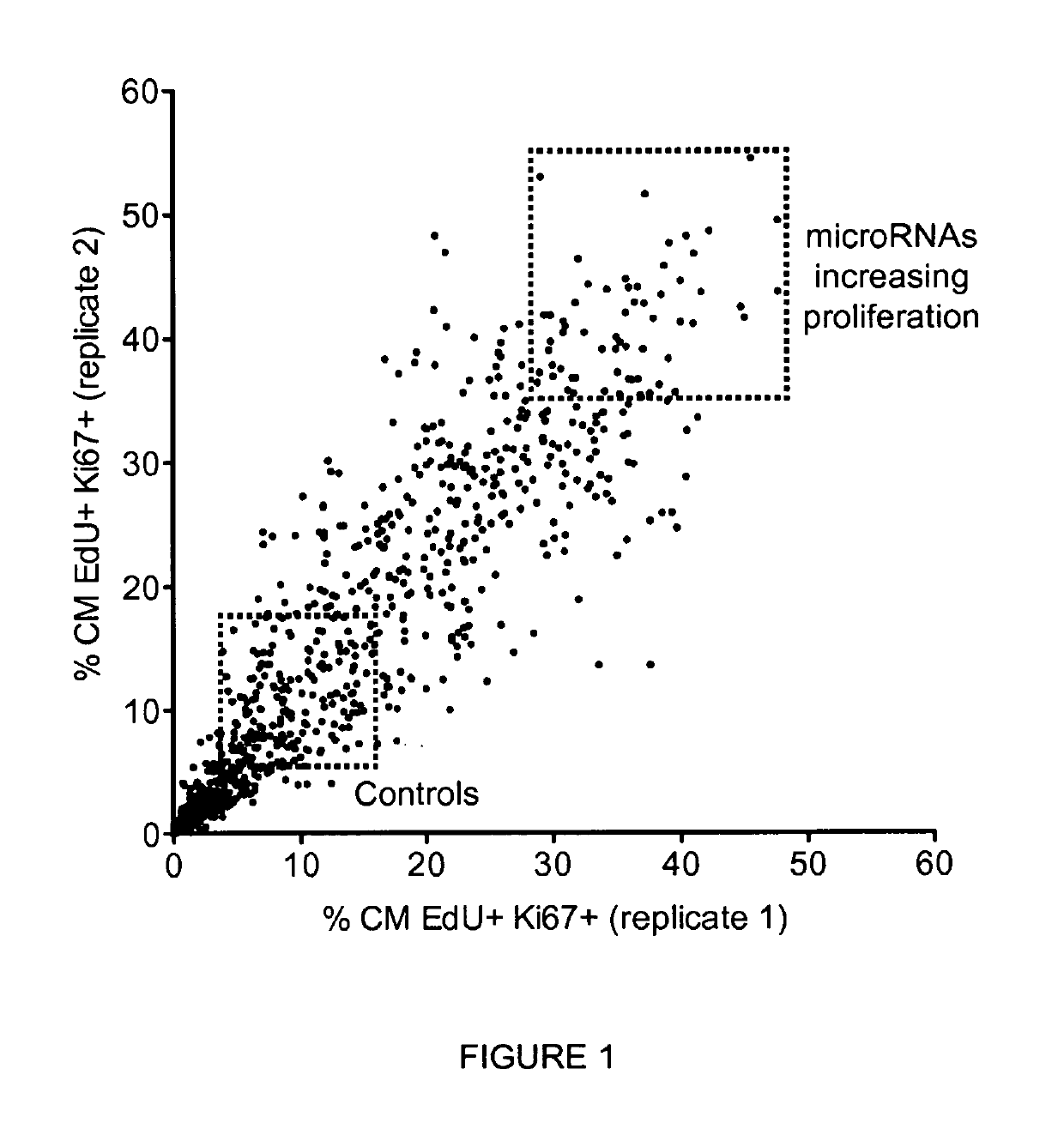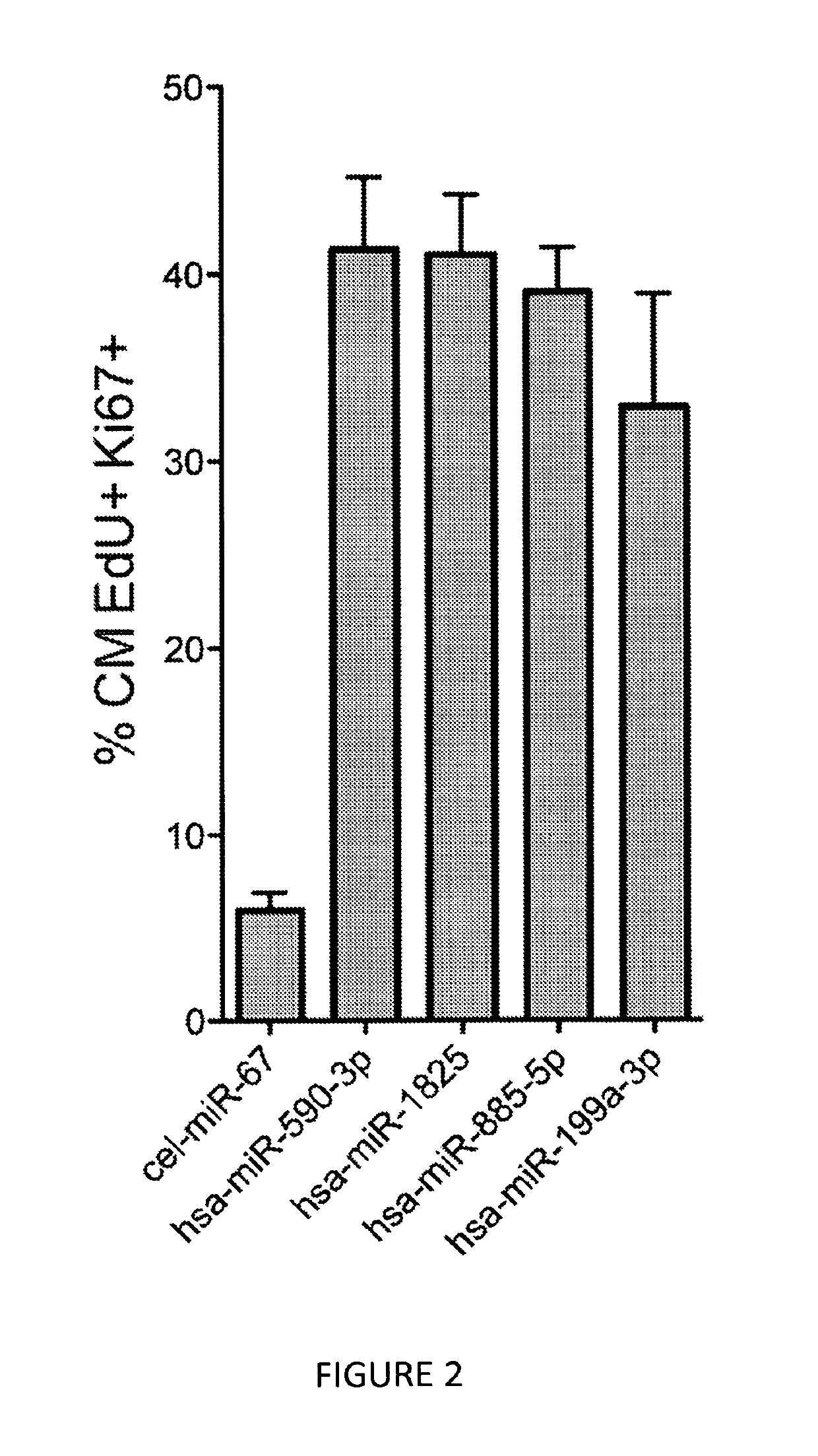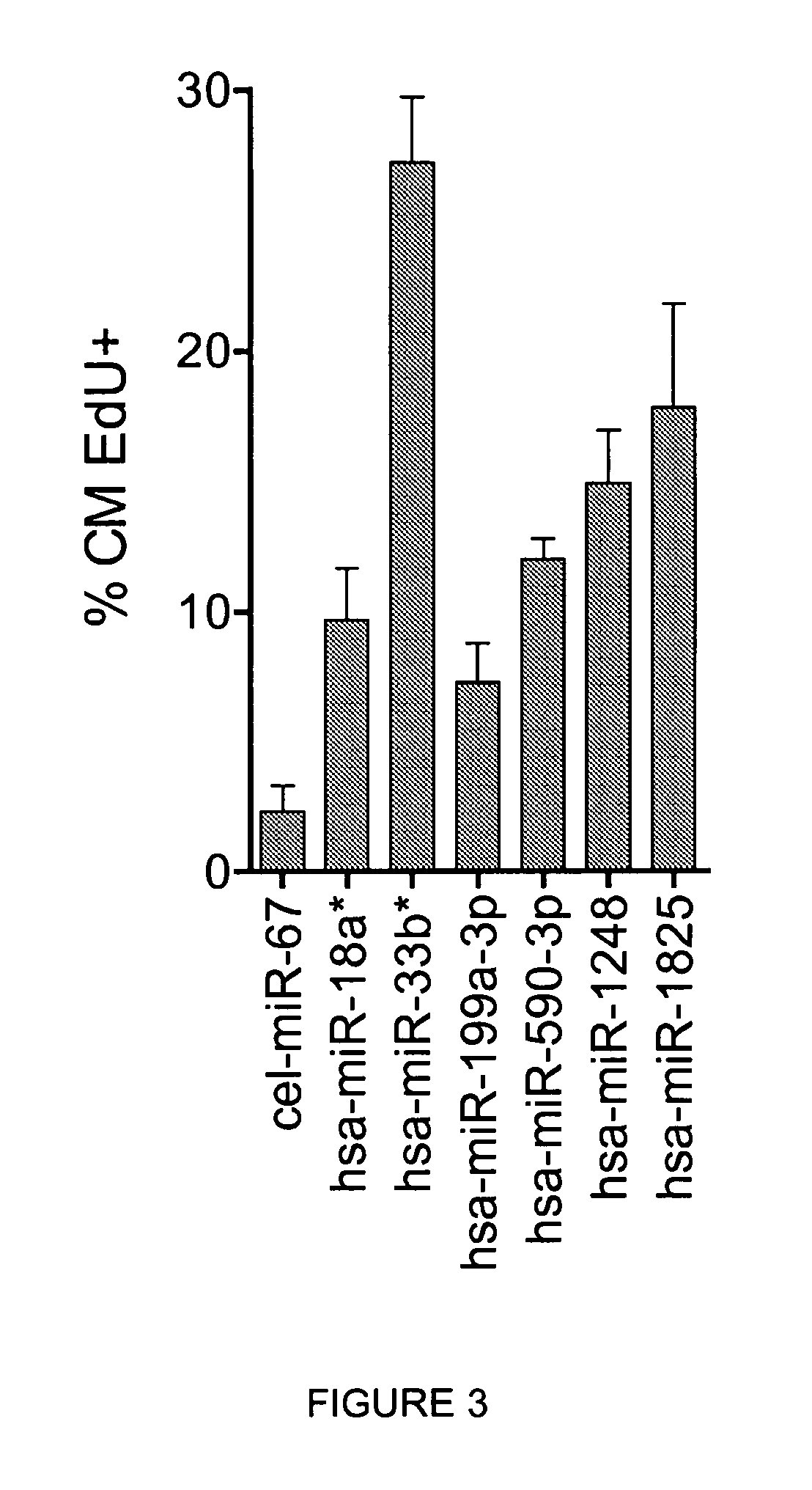MicroRNAs for cardiac regeneration through induction of cardiac myocyte proliferation
a technology of cardiac myocytes and micrornas, which is applied in the field of micrornas for cardiac regeneration through induction of cardiac myocyte proliferation, can solve the problems of compromising cardiac function, poor long-term prognosis of heart failure patients, and very restricted ability of mammalian adult heart to repair itself after injury, etc., and achieves the effect of increasing the number of cardiomyocytes and increasing the proliferation of fully differentiated rat cardiomyocytes
- Summary
- Abstract
- Description
- Claims
- Application Information
AI Technical Summary
Benefits of technology
Problems solved by technology
Method used
Image
Examples
example 1
Functional Screening Identifies MicroRNAs that Control Proliferation of Rat Neonatal Cardiomyocytes In Vitro
[0115]Given the involvement of microRNAs in the regulation of several biological processes, including cell proliferation, we wanted to investigate whether microRNAs might control proliferation of primary cardiac myocytes ex vivo and identify the microRNAs most effective in increasing the proliferative capacity of these cells.
[0116]To tackle this issue, we performed a fluorescence microscopy-based high-throughput screening in rat neonatal cardiomyocytes using a commercial library of 988 microRNA mimics (miRIDIAN microRNA mimics, Dharmacon, Thermo Scientific) corresponding to all the annotated human microRNAs (according to miRBase release 13.0, 2009). Cells were stained with the nuclear dye Hoechst 33432, antibodies against the cardiomyocyte marker sarcomeric alpha-actinin and the proliferation antigen Ki-67, and with EdU, an uridine analogue that is incorporated into newly synt...
example 2
A Subset of MmicroRNAs Control In Vitro Proliferation of Cardiomyocytes from Different Organisms (Rat, Mouse and Human)
[0125]During development, cardiomyocytes in the mouse heart stop dividing sooner than their counterparts in the rat heart (shortly after birth and 3 to 4 days after birth, respectively). As a consequence of this, cardiomyocytes isolated from newborn mice have a proliferative capacity significantly lower than those isolated from rats of the same age; while proliferation of cardiomyocytes isolated from neonatal rats (post-natal day 0) is ca. 12.5%, that of mice cardiomyocytes is ca. 5%.
[0126]We therefore repeated the fluorescence microscopy-based high-throughput experiments described in Example 1 in mouse neonatal cardiomyocytes, using the 208 selected microRNAs that were shown to increase proliferation of rat cardiomyocytes. Results from these experiments showed that out of the 208 microRNAs tested, 36 microRNAs also increased the proliferation of mouse cardiomyocyte...
example 3
MicroRNAs Increase Cardiac Myocytes Mitosis, Cell Division (Cytokinesis) and Cell Number In Vitro
[0133]To demonstrate that the increase in cardiomyocyte proliferation, as assessed by staining with Ki-67 proliferation marker and EdU incorporation during DNA synthesis, correlates with an increase in cardiomyocyte cell division events (cytokinesis), cardiomyocytes were treated with individual microRNAs and additional markers were evaluated, namely: i) staining for histone H3 phosphorylated at Serine 10(P-S10-H3), which detects cells in late G2 / mitosis; ii) staining for AuroraB kinase, a component of midbodies, a transient structure which appears near the end of cytokinesis just prior to, and is maintained for a brief period after, the complete separation of the dividing cells; and iii) cardiomyocyte number at 6 days after microRNA transfection.
[0134]Treatment of cardiomyocytes with the selected microRNAs led to a significant increase in both the number of cells positive for P-S10-H3 (f...
PUM
| Property | Measurement | Unit |
|---|---|---|
| time | aaaaa | aaaaa |
| total volume | aaaaa | aaaaa |
| size | aaaaa | aaaaa |
Abstract
Description
Claims
Application Information
 Login to View More
Login to View More - R&D
- Intellectual Property
- Life Sciences
- Materials
- Tech Scout
- Unparalleled Data Quality
- Higher Quality Content
- 60% Fewer Hallucinations
Browse by: Latest US Patents, China's latest patents, Technical Efficacy Thesaurus, Application Domain, Technology Topic, Popular Technical Reports.
© 2025 PatSnap. All rights reserved.Legal|Privacy policy|Modern Slavery Act Transparency Statement|Sitemap|About US| Contact US: help@patsnap.com



